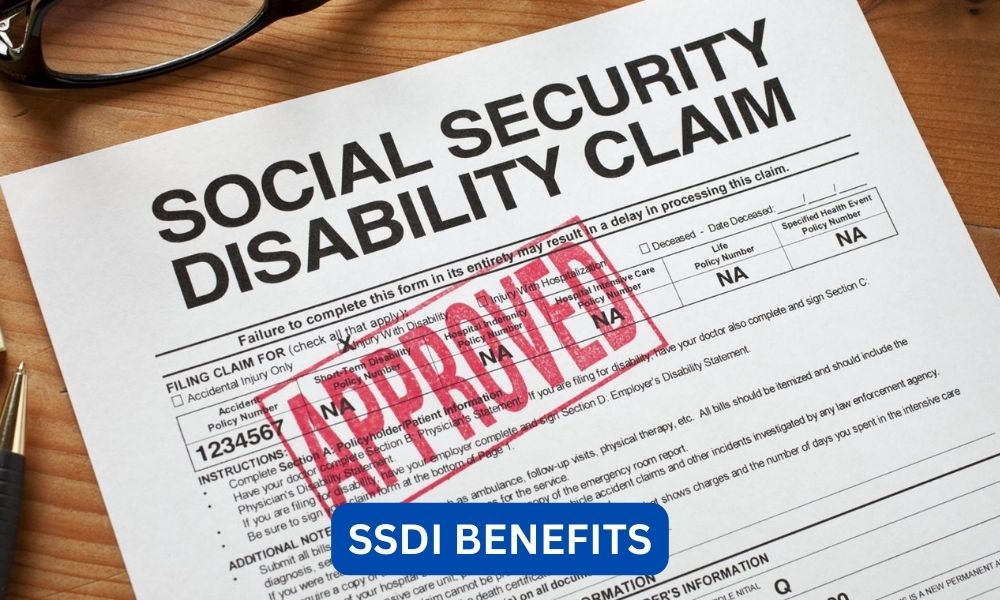When it comes to financial stability, having a steady source of income is crucial. However, for individuals who are unable to work due to a disability, this can be a major challenge. Fortunately, there are government programs in place to provide financial assistance to those who are unable to work due to a disability. One such program is the Social Security Disability Insurance (SSDI) program. In this article, we will delve into what SSDI benefits are, who is eligible for them, and how to apply for them.
Contents
Who is Eligible for SSDI Benefits?
In order to be eligible for SSDI benefits, you must meet the following criteria:
- You must have a disability that is expected to last for at least one year or result in death.
- You must be unable to engage in substantial gainful activity (SGA) due to your disability. SGA is defined as earning more than a certain amount of money per month, which is determined by the SSA.
- You must have worked and paid Social Security taxes for a certain number of years, depending on your age at the time of disability.
It is important to note that the SSA has a strict definition of disability. According to their guidelines, a disability is a physical or mental impairment that prevents an individual from engaging in substantial gainful activity and is expected to last for at least one year or result in death. The disability must also be severe enough to significantly limit an individual’s ability to perform basic work activities.
Read:what is a benefit corporationAdditionally, the SSA has a list of medical conditions that automatically qualify an individual for SSDI benefits. This list, known as the “Blue Book,” includes conditions such as cancer, heart disease, and mental disorders. However, even if your condition is not listed in the Blue Book, you may still be eligible for SSDI benefits if you can prove that your disability prevents you from working.
How to Apply for SSDI Benefits
The process of applying for SSDI benefits can be lengthy and complex. It is important to gather all necessary documents and information before beginning the application process. This includes medical records, work history, and personal information such as your Social Security number and birth certificate.
The first step in the application process is to complete an application online or at your local Social Security office. You can also call the SSA to schedule an appointment to apply in person. Once your application is submitted, the SSA will review your work history and medical records to determine if you meet the eligibility criteria for SSDI benefits.
If your initial application is denied, you have the option to appeal the decision. The appeals process can be lengthy and may require the assistance of a disability lawyer. It is important to provide as much evidence as possible to support your claim during the appeals process.
Read:what are the benefits of aarpHow Much Can You Receive in SSDI Benefits?
The amount of SSDI benefits you can receive is based on your average lifetime earnings before becoming disabled. The SSA uses a complex formula to calculate your benefit amount, taking into account your age, work history, and contributions to the Social Security system.
On average, individuals receive around $1,200 per month in SSDI benefits. However, the maximum benefit amount for 2021 is $3,148 per month. It is important to note that SSDI benefits are subject to federal income taxes, but not state income taxes.
Other Important Things to Know About SSDI Benefits
Here are some other important things to know about SSDI benefits:
- There is a five-month waiting period before you can receive SSDI benefits. This means that you will not receive benefits for the first five months after your disability begins.
- If you are receiving SSDI benefits and your condition improves, you may be able to return to work. However, if you are unable to continue working due to your disability, you can request to have your benefits reinstated without having to reapply.
- If you are receiving SSDI benefits and reach full retirement age, your benefits will automatically convert to retirement benefits.
- You can also receive Medicare benefits after receiving SSDI benefits for two years.
Case Study: John’s Experience with SSDI Benefits
John was a construction worker who had been working and paying Social Security taxes for over 20 years. Unfortunately, he was diagnosed with a degenerative spinal condition that made it impossible for him to continue working. He applied for SSDI benefits and was initially denied. However, with the help of a disability lawyer, he was able to appeal the decision and provide additional evidence to support his claim.
Read:What age for medicare benefits?After a lengthy appeals process, John was approved for SSDI benefits. He received around $1,500 per month, which helped him cover his living expenses and medical bills. He was also able to receive Medicare benefits after two years of receiving SSDI benefits, which helped him afford the necessary medical treatments for his condition.
Conclusion:
In conclusion, SSDI benefits are a crucial source of financial assistance for individuals who are unable to work due to a disability. It is important to understand the eligibility criteria and application process in order to increase your chances of being approved for benefits. If you or a loved one is unable to work due to a disability, it is worth exploring the option of applying for SSDI benefits to help alleviate financial stress and provide a sense of stability.









